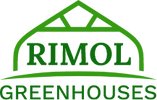Creating A Next-Gen High Tunnel Grow Space with Penn State’s Kathy Demchak
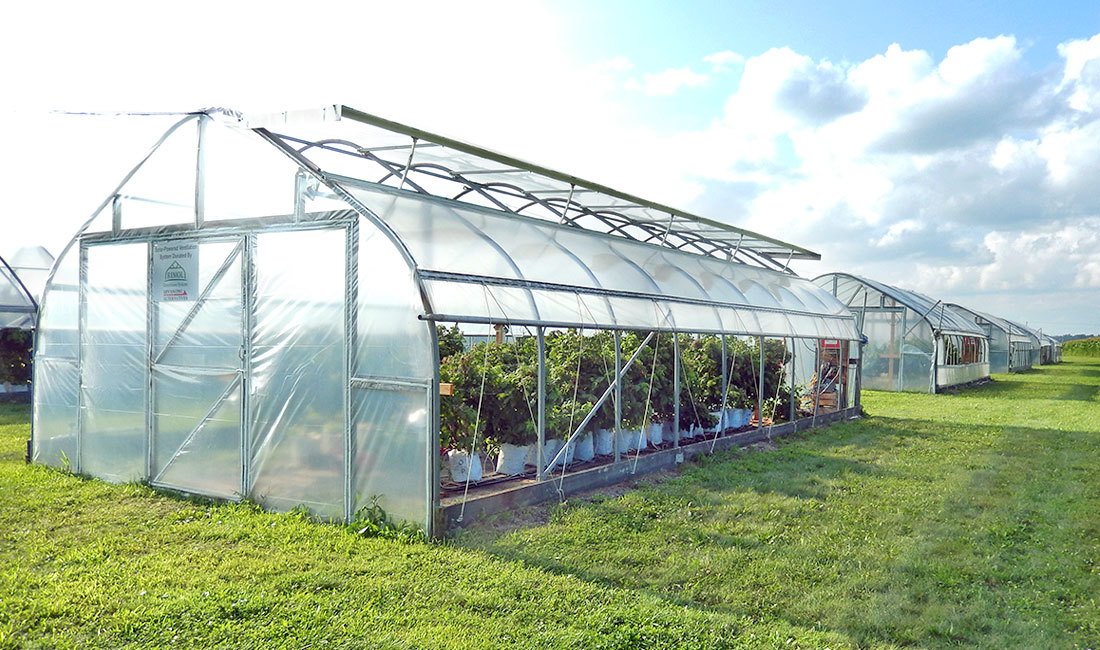
When it comes to exploring new frontiers in high tunnel growing, few people bring more knowledge and dedication into the structure than Kathy Demchak.
Bringing over 15 years of experience growing berries and other crops in high tunnels to her work as Senior Extension Associate for Penn State’s Department of Plant Science, Kathy has brought a new level of understanding into the high tunnel growing process.
In her quest to transfer as much of that knowledge to students and community members through Penn State’s extension program, Kathy has found that many growers are curious and excited about the prospect of high tunnel growing. One factor, however, remains a major impediment: the learning curve.
“High tunnels are a real game changer in terms of operations inside the grow space… and for some growers, adjusting can sometimes be difficult,” said Demchak. “That’s why having a partner like Rimol, who really understands the components of the structures - as well as how to go about actually doing the growing once they’re up - has been a big help in getting extension and community growers inside to actually see what those challenges are and how to respond.”
At Rimol Greenhouse Systems, we’ve been proud to work with Kathy Demchak and her Penn State staff for several years, beginning with a number of university research projects and eventually extending into her own extension work at Penn State.
The work they’ve done to bring new and innovative growing techniques to growers on the ground has been inspiring - and seeing all that great work done within donated Rimol greenhouses has only made the results that much more inspiring.
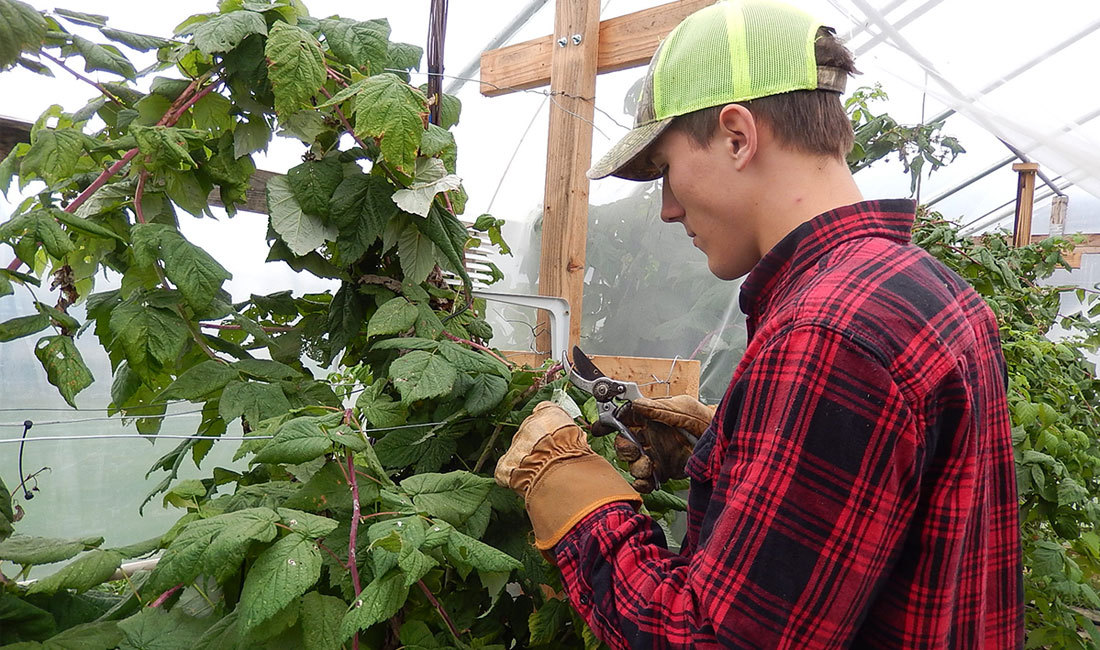
Helping Growers Overcome The Learning Curve
In her work with extension and community members, Kathy Demchak has learned that a few basic pitfalls seem to affect many growers who are just beginning their transition to high tunnel growing. She calls this the “learning curve,” and it features a few common trouble spots:
- Crops grown in high tunnels tend to be much more vigorous, so air flow can be reduced by the foliage; and
- High Tunnels have a tendency to build heat and moisture without the proper ventilation, which can encourage the growth of mold and disease.
Add to that growing problems with common pests like Spotted Wing Drosophila, which can infest berries and other fruit crops right at the cusp of ripening. Together, issues like these can significantly increase the risk to growers just getting started in their high tunnels.
The solution: to find and experiment with new ways of growing within high tunnels, and to implement systems that allow for specialty crops to flourish despite (and even helped by) these common problems.
Kathy’s work on berry growth within high tunnels, for example, actually utilizes the common problem of high moisture levels and high temperatures within greenhouses to its benefit.
When plants breathe in carbon dioxide, they also breathe out oxygen - a process which also produces moisture, which is released into the air within the high tunnel. Heat also builds as sunlight enters the tunnels, and the soil and plants warm up. Left unchecked, these can be a serious problems. However, when carefully controlled, this additional heat and moisture may actually be a benefit to berry plants and other warm-weather crops, especially fo growers in colder northern climates.
In this way, Kathy and her research team are actually turning some of the biggest pitfalls in high tunnel growing into benefits for specialty crop growers - and that can represent a serous benefit to small-scale growers looking for ways to better control yields and extend their growing seasons.
“In reality, our goal is to be pesticide free within the high tunnels,” said Kathy. “That’s something I’d say is actually completely doable in a high tunnel, but it takes the right level of environmental control to really see the results we’d like.”
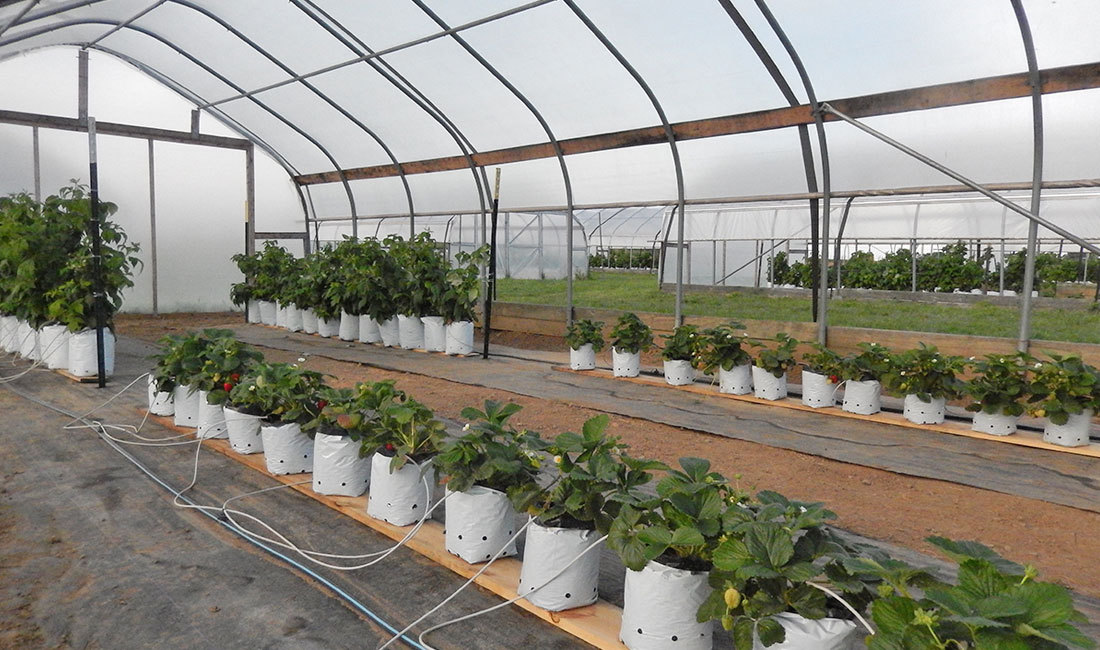
A Growing Relationship
Although it seems like just yesterday, our relationship with Kathy began nearly a decade ago. Our paths crossed about ten years after Kathy first started to dive into the world of high tunnel growing around the year 2000, and we connected in 2010 when she, Eric Hanson at Michigan State Univ., and other researchers began putting together a research grant for the USDA directed at providing funding for the growing of specialty crops.
“High tunnels were of increasing interest to growers at that time, and especially for specialty crop researchers,” said Demchak. “We surveyed a wide variety of growers at the time - and got over 300 responses - to gain a better understanding of which major problems the industry was facing. We saw two predominant responses: temperature control, and labor constraints.”
This grant process helped Kathy identify the main problems facing specialty crop growers, and her other research efforts reflected similar conclusions. A current multi-institutional study led by Michigan State, for example, began looking at high tunnels as a solution, experimenting with the effects of sunlight filtration, ventilation, and airflow on specialty crop growth.
Another was her work with the advisory committee on the Tunnelberries project, which looked at the effect of ventilation and temperature management for berry production. Fortunately for Rimol, our co-founder Mike Marett is also part of the Tunnelberries team as an industry advisor - and the connection between our work and Kathy’s took off in earnest from there.
What followed was months of back and forth discussions between our team and the Penn State team over how we could help support their efforts to bring new growing techniques and solutions to their research, to their students, and to growers in the ground in their area. Among the most pressing needs on Kathy’s radar was the growth in automated systems within high tunnels, but budgets did not necessarily allow for the kind of investment in these technologies she needed to truly dive into the research.
The result: Rimol donated a wide range of cutting-edge automation equipment, and even stepped in to renovate four high tunnels at Penn State to allow more students and community members to get a hands-on look at what is actually in the works, and what they can do to transfer all that research into real, actionable improvements back on the farm.
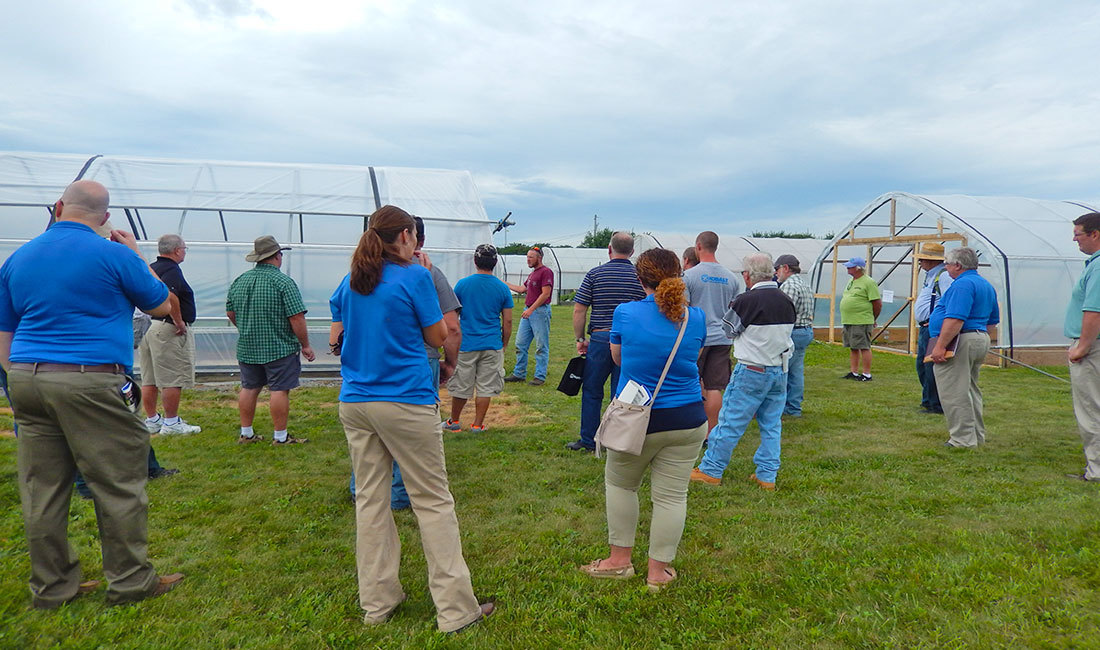
Bringing Penn State’s Research To New Horizons
With a new batch of renovated high tunnels and automation technology in place for research at Penn State, Tunnelberries research underway, and a number of grants and other projects in the works, Kathy and her Penn State team began thinking of a way to bring more of their students and community extension members into the fold and actually on the ground to see the innovations in growing for themselves.
Their idea: to invite interested growers, students, researchers, and industry partners to gatherings where the Penn State team could share their research, discuss preliminary results, and offer advice on how real growers can implement better techniques and technologies to better improve yields and profits on a small scale.
“I knew Rimol, as a company, had a lot of experience working with extension and research personnel. I also knew that Mike had a lot of personal experience actually working with the structures, and as a grower himself I knew he knew plenty about actual crop production” said Demchak. “That’s why when we started to plan our high tunnel tours for Ag Progress Days at Penn State, I thought Mike would be a good fit for a speaker.”
And speak he did. Mike went down to Penn State for the annual Agricultural Progress Days event and led a discussion on high tunnel growing from right inside one of the newly-upgraded tunnels, offering growers and students alike the chance to see the systems in action, ask questions, and discuss new ideas together on the ground.
“Getting to be in the field, actually talking with growers and hearing their needs - that’s valuable to me as a grower, to us as industry leaders, and to Rimol as a company looking to meet the needs of the modern grower,” said Mike. “The event looked to me like a huge success, and I was so happy to be a part of it.”
It’s this dedication to not just finding new and innovative techniques in high tunnel growing, but to actually share that with those most likely to actually benefit, that drew us to work with Kathy - and the results we’ve seen so far have been extraordinarily impressive.

Tomorrow’s Solutions, Today’s Growers
If there’s one thing we love to see, it’s actual growers finding actionable solutions for their biggest problems - especially when they find those solutions under the roof of a Rimol greenhouse.
“Generally, we see that growers who start small-scale with their high tunnel tend to be more satisfied with the results than those who start big,” said Kathy. “Having real working high tunnels near our campus for students and extension members to get into, learn, and explore with is really beneficial.”
“These growers - these are their day jobs, and they’re looking at their options from a labor- and cost-saving perspective,” said Kathy. “Being able to see all of the components, systems, and options in use to determine which works best for them can make a real difference. That way, nobody has to spend time and energy reinventing the wheel.”
While the final results of much of Kathy’s ongoing research are still in progress, we remain incredibly excited to see the lesson she and her team have learned in the process turned into real solutions for growers on the ground - and to be part of the process of getting that to growers in the future.
With a host of trade shows and conferences coming up, Kathy and her team will have plenty of opportunities to share their findings with those most likely to benefit - real growers, facing real problems.
Rimol plans on being right there as well - from the Mid-Atlantic Fruit and Vegetable Growers trade show, to high tunnel workshops around the country, and certainly the next Ag Progress Days at Penn State. Plus, we’ll always be in touch, helping Kathy and her team find new solutions and push new boundaries all along the way.
“We wouldn’t have been able to get even the first part of this project off the ground without Rimol,” said Kathy. “To have somebody who really understands the components and structures, as well as how to go about doing the actual growing - not to mention the donation of that necessary equipment, has been crucial. We wouldn’t have even known what to ask to have donated, but Mike brought his help to the table and we’ve been so pleased to work together.”
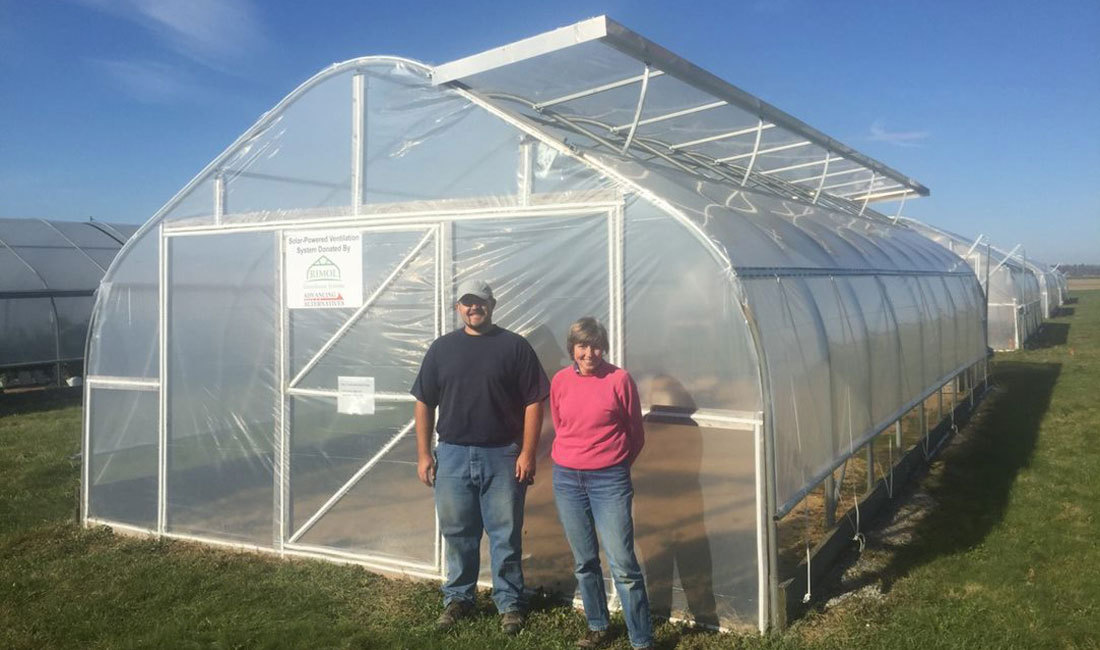
If you’re interested in seeing more of how this cutting-edge high tunnel equipment is being put to good use for growers right now, check out Penn State’s recent work within their high tunnel systems. Then, when you’re ready to get your own grow off the ground, get in touch with our team at Rimol and see what we can do to get your grow going on the right foot.
Shop
GREENHOUSES
Rimol Greenhouses are designed and manufactured to be, simply put the most dependable greenhouse structures around.
Browse Products